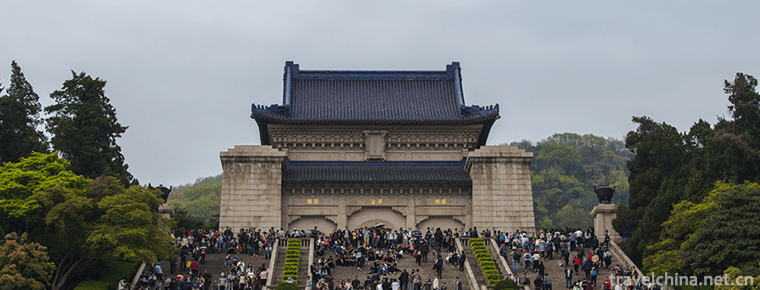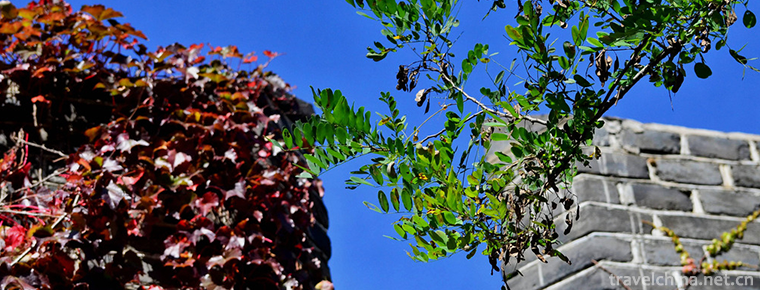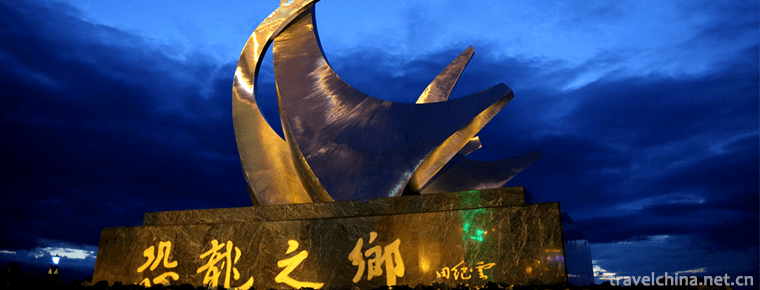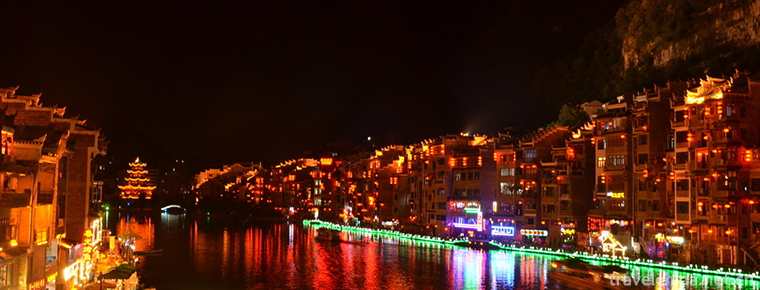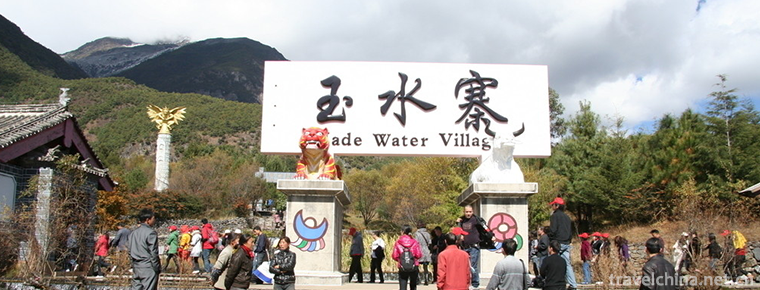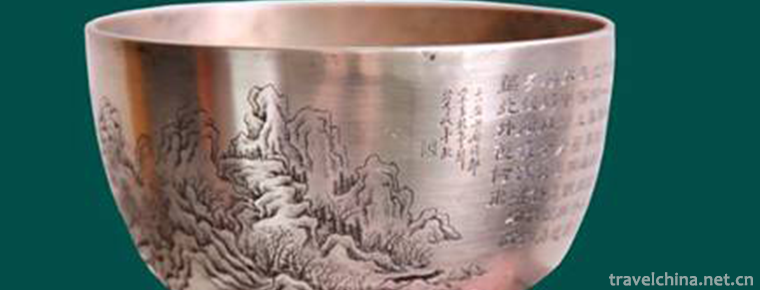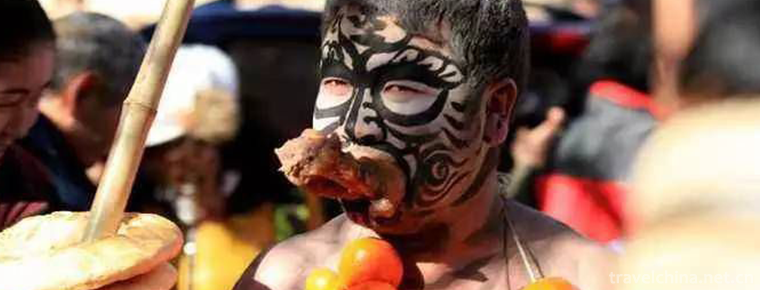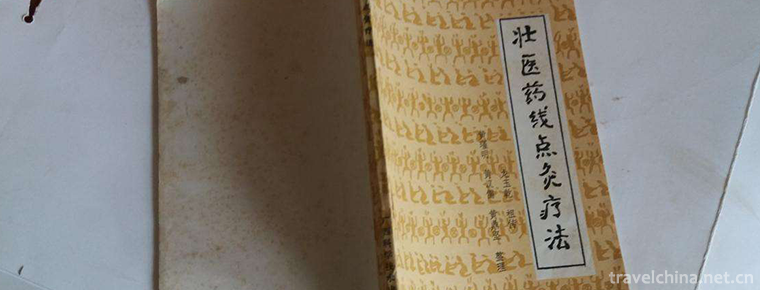a type of Shaanxi Opera popular in the Weinan Dali region
a type of Shaanxi Opera popular in the Weinan Dali region
Bowl-bowl tune is one of the local operas in Shaanxi Province, also known as "lamp-bowl tune" and "Ruan'er tune". The former is named for the main rhythm of the small copper bowl and shadow lamp; the latter is named for the main musical instrument Ruan Xian; the structure of the board tune is popular and elegant, the music is melodious and graceful, and the rhythm is precise.
This kind of drama originated in Huayin and Huaxian area at the northern foot of Huashan Mountain in Shaanxi Province. It had been formed and matured in the early Qing Dynasty. Historic plays have always been performed in the form of shadow play popular among the people. Mainly prevalent in Xi'an, Weinan, Huxian, Suide, Mizhi, Yangxian, Xixiang and other places in Shaanxi; Shanxi, Shanxi and Luliang, Xiaoyi; Lingbao, Shaanxi, Lushi in Western Henan; Lanzhou in Gansu and other places. The representative dramas are the traditional operas "Golden Hair", "White Jade Hawthorn", "Flame Horse", "Yang Guifei", "Red Detachment of Women", "Butterfly Love Flowers" and so on.
In 1956, the Mei Bowl Troupe of Shaanxi Academy of Traditional Opera first succeeded in moving the traditional opera "Jin Hai" from shadow play to the grand stage; in 1958, Premier Zhou Enlai renamed the opera "Chinese Opera", but it is still commonly known as "Bowl Bowl Cavity" among the people; on May 20, 2006, Bowl Bowl Cavity was approved by the State Council to be included in the first batch of national intangible cultural heritage lists.
Orion of the Name
Bowl-bowl tune (Chinese Opera), originating from folk rap and singing art, is one of the local operas in Shaanxi Province. It is mainly composed of bowl-bowl and yueqin, with two strings, huqin, side drums, bang yu, Magong and suona, etc. It is called "bowl-bowl tune" because it determines the music's importance and urgency by tapping bowl. Bowl-bowl tune absorbs more artistic elements of the old tune in its formation process, which is the old tune and the old tune. The tune is different, and it is called "time tune" by Guanzhong people.
In 1958, Shaanxi Academy of Traditional Opera came to Beijing to report and perform. Zhou Enlai and other leaders appreciated the folk music accompaniment very much. They also learned to sing "Nine Bends" with Li Ruifang. Li Ruifang introduced to the Premier that the bowl tune of Shaanxi local music originated from the generation of Huayin and Huaxian at the foot of Huashan Mountain in Xiyue. After listening to it, Premier Zhou felt that the tune was very pleasant, that was the name of the bowl tune. The name "Chinese Opera" implies the meaning of China. But in the folk people also commonly known as "bowl bowl cavity".
History of Development
Early development
There is no exact written record of the formation age of bowl-bowl cavity, and it can only be investigated and analyzed according to some ancient bowl-bowl cavity Lyric scripts. In the early years of Qianlong in the Qing Dynasty, there were performances by the Bowl and Bowl Cavity Ban Society in Xi'an; the performances appeared in the form of shadow play, which was relatively simple. According to legend, the bowl and bowl cavity of Yangxian County (in the area of Hanzhong) was created by Yong Chaojie, an artist of Wanjiagong in Yangxian County, during the Qianlong period. Yongyuan was a shadow mast opera artist, who went to Weibei to perform. After learning bowl cavity in Chaoyi (today's Dali), Yong Kejing (cat doll) and his disciple Fuwa combined with bowl cavity. After that, Yong Kejing (cat doll) and his disciple Fuwa absorbed Taoist singing cavity and gradually formed a unique bowl cavity of shadow.
During the reign of Qianlong in the Qing Dynasty (1736-1795), according to the existing historical data, bowl and bowl cavity was quite popular at that time. Various kinds of choreography boards were quite complete, and the famous playwright Li Shi13 and his ten works were produced. It shows that the generation, formation and development of the bow and wrist cavity has gone through more than 300 years. Based on the analysis of the lyric structure of Li Fanggui's "Ten Books", it can be concluded that the main vocal tunes of bowl and bowl tune had been formed at that time. It is mainly distributed in Dali (Tongzhou), Chaoyi, Pucheng, Weinan, Lintong, Huayin, Huaxian, Fuping, Hancheng and other areas.
During the reign of Daoguang and Xianfeng (1821-1861), more than ten box classes were developed. The bowl cavity of Fengxiang in Xifu was earlier than that of Dongfu (Tongzhou). It was popular in Fengxiang and Qianyang after the middle of Qing Dynasty. In addition, the bowl cavity in northern Shaanxi has its own style. It was formed in Yihe Town, Suide. It is popular in Suide and Mizhi, and its singing is greatly influenced by Jin Opera. In Shaanxi Shadow Show period, it developed into: Eastern Road, centered on the old Tongzhou Prefecture, also known as Dongfu Bowl Cavity (Weinan); Western Road, centered on Fengxiang Prefecture, also known as Xifu Bowl Cavity (Baoji); Southern Shaanxi Bowl Cavity (Hanzhong), centered on Yangxian County, has a certain relationship with Eastern Road.
Around the third year of Guangxu (1877), artists in Dali area fled to Shanxi because of the famine. The bowl cavity was introduced into Fenyang, Quwo, Xinjiang, Fenyang and Xiaoyi of Shanxi Province, thus forming the bowl cavity of Shanxi Province. According to Xiaoyi Shadow Picture Artists, Shanxi bowl cavity is divided into two ways, one way popular in Quwo, Xinjiang, the other way popular in Fenyang, Xiaoyi, Jinzhong. In the process of development, due to the influence of languages, folk music and operas in different regions, each road gradually has its own characteristics in repertoire, music, singing, musical instruments, etc. It has become a local bowl-bowl-cavity shadow play. Among them, a branch of Fenyang and Xiaoyi was introduced, and the bowl cavity of Xiaoyi was formed under the influence of Bangzi in Zhonglu and Fenxiao Yangko. In addition, Quwo Bowl Tune was originally the singing tune of shadow play in Huayin and Dali in eastern Shaanxi Province. Old artists believed that Quwo bowl cavity was introduced by businessmen in Shaanxi Province. Because of the good friendship between Qin and Jin Dynasties in history, a lot of good stories about economic and cultural exchanges were found in historical books. It is reasonable to say that this art form was introduced by businessmen. After the introduction, the local people liked and imitated, and then spread. At the beginning, only temporary stage performances were performed in rural terraces, gates and street corners. Because of its lively form, melodious tunes, small classes, low prices, it was very popular. In the mid-Guangxu period, Liu Xiaoqing, a bowl-bowl-cavity shadow artist in Houzhuang, Duizhen, went to Shaanxi twice to study the art of screen and window shadow carving. Many young people in the area joined the film troupe. The professional and semi-professional troupes increased year by year, and absorbed some plays of puppet and Jin and Pu Opera. By the end of Guangxu period, there were sixty or seventy shadow troupes in Xiaoyi Bowl Cavity, performing all over Jin Dynasty, and far to Ningxia, Liaoning and other places.
Before and after the Revolution of 1911, there were more than 50 classes in Tongzhou and Chaoyi.
In the early years of the Republic of China, Quwo bowl cavity entered a prosperous period. There were many classes, such as Chen Xiaoban, Dafu Ban and Baozi Ban, which formed different art schools. Every year the Lantern Festival and the ancient temple fair in July compete to open in the county town. The content of the plays is mainly mythological and martial arts, and some of them are for comedy and wish-making. The scope of the performance was extended to the surrounding areas of Xiezhou and Jiangzhou.
Modern Development
Before the founding of the People's Republic of China, Shaanxi's shadow bowls declined successively. The bowl cavity of Xifu has disappeared in the 1930s, and the rest disappeared on the eve of the founding of the People's Republic of China. After the founding of the People's Republic of China, through the excavation and rescue of relevant departments, each bowl cavity has developed into a kind of opera. In the early days of the founding of the People's Republic of China, its two branches, Dongfu and Xifu, were put on the stage by Shaanxi Opera Theatre, and then the Yangxian People's Opera Troupe developed the bowl and bowl tune of Yangxian County into a form of opera. Mainly prevalent in Dali, Chaoyi, Weinan, Xi'an, Huxian, Suide, Mizhi, Yangxian, Xixiang and other places. Xiaoyi in southern Shanxi and central Shanxi, Lingbao in Western Henan, Shanxian, Lushi and Lanzhou in Gansu are also popular.
Early days of the founding of the People's Republic
After 1949, Quwo County formally established a professional theatre troupe, and widely absorbed the tunes and music cards of Bangzi in Puzhou and Meihu in southern Shanxi, which became a kind of opera with local characteristics. In the early 1950s, there were actresses who broke the monotonous singing of only one male actor, which combined birth, Dan, Jing, the end and ugliness, enriched the singing color and made the singing more pleasant and moving. In 1952, after the first National Opera Concert, Shaanxi shadow troupes improved greatly. Some of them used electric lights to illuminate, carved scenery adapted to real life, increased band singers and performed modern operas, which was a great progress in the history of bowl-bowl opera development. In 1955, the Mei-bowl troupe of Shaanxi Opera Research Institute was established, making bowl-bowl opera an artistic feature. Xin; In 1956, the Mei Bowl Troupe of Shaanxi Opera Research Institute succeeded for the first time on the large-scale stage in Xi'an with a fold of "Borrowing Water and Giving Hair". In 1958, Xiaoyi City set up the Bowl Bowl Opera Troupe and began to walk onto the real-life stage from shadow play. In the same year, the Mei Bowl Troupe of Shaanxi Opera Research Institute went to Beijing to report and perform and received by the national leaders cordially; in 1959, Jin Hai 》 He went to 13 provinces (cities) in the north and south of the Yangtze River to perform on tours; in 1960, the bowl cavity in northern Shaanxi was changed into a stage play. In March 1960, the Quwo Bowl Tune Art School was set up to enroll 79 students in three classes of performance, music and dancing beauty, and then performed the Folk Opera "Garden Gift". The Quwo Bowl Tune Opera Troupe was set up. Since then, shadow play has been replaced by real people. In 1964, the Mei Bowl Troupe of Shaanxi Opera Academy rehearsed "Jiang Jie"; in 1973, it rehearsed "Red Detachment of Women" and "Ludang Fire" and other modern operas, which further expanded the influence of bowl bowl cavity; in 1977, in commemoration of the first anniversary of Chairman Mao's death, the Shaanxi Opera Academy rehearsed the new Chinese opera "Butterfly Love Flowers" transplanted by Zhang Xiaobin.
Reform and Opening-up
In 1986, Li Ruifang, head of the Chinese Opera Troupe of Shaanxi Opera Research Institute, rehearsed the new Chinese opera "Princess Yang". She creatively melted traditional opera and modern musical into one furnace, and used novel expression techniques to make the opera reflect the resounding artistic beauty. In the first Shaanxi Art Festival, she won the first prize and the gold medal in the northwest of the China Art Festival, which won the Shaanxi opera repertoire. In 1987, the drama group of "Yang Guifei" went to Hong Kong to "China Local Opera Exhibition" and aroused repercussions, which first promoted Chinese opera to the international stage. The Hong Kong newspaper praised "Yang Guifei is graceful and refreshing, Li Ruifeng is unique"; in 1989, she rehearsed a new Chinese opera Famenyi. In 1992, the Mei Bowl Troupe of Shaanxi Opera Research Institute rehearsed the transplanted Finnish musical Zhenzhen, which was successfully starred by Li Ruifeng and Li Dongqiao. The major Finnish newspapers and magazines reported on the premiere. In the same year, they participated in the exchange performance of Chinese opera "Golden Triangle" and won the award of excellent repertoire show. He participated in the exchange performance of Chinese Opera (Southern Film) and won the Excellent Performance Award. In 1994, the newly edited large-scale historical drama "True True" was invited to perform in Finland;
In 2003, the Mei Bowl Troupe of Shaanxi Opera Academy broadcasted "Golden Hair" on CCTV; in 2004, "Golden Hair" was awarded the Excellent Fitting Instrument Award for Shaanxi Excellent Drama Exhibition; in 2005, "Golden Hair" was awarded the Excellent Drama Award for the Fourth Shaanxi Arts Festival; on May 20, 2006, the bowl bowl tune was approved by the State Council and listed in the first batch of national intangible cultural heritage in 2007; Ren Xiaolei's bowl-bowl opera "Peach Garden Borrowing Water" was broadcast on CCTV; in 2008, Hu Ping, an outstanding opera actor of Shaanxi Opera Academy, performed the new historical play "Yang Guifei" in which "Guifei Drunken by Guifei"; in the same year, the Shaanxi Provincial Committee and the provincial government invested a huge amount of money to elaborately create a Tang culture as the theme, which undertook the Tang court dance gorgeous music and absorption. In Shaanxi bowl bowl, China's first large-scale real history dance drama "everlasting regret" was staged at Huaqing Hot Spring in Lintong, Xi'an. In 2009, the eyebrow bowl group of Shaanxi Opera Research Institute rehearsed "Jin Wan Chai", retaining the essence of the original, absorbing the melody of brow family, opera and other female operas, and adopting the method of theme music in the opera creation, which enriched the bowls to a large extent. Musical expression of bowl cavity. The modern technology is used in the beauty of dance, which gives people the impact and aesthetic feeling from the angle of view. Directing technique and acting style also have a deeper exploration and breakthrough on the basis of classical drama. In the same year, the Youth League of Shaanxi Opera Academy also performed many bowl-bowl operas, including Li Junmei's Funeral Flower Yin, Dang Lili's Yang Guifei, Ren Xiaolei's Borrowing Water, Zhang Yumei's Ruishan, Li Juan's Red Lady Army and Li Mei's Eighteen-li Send.
In 2010, Shaanxi Academy of Traditional Opera launched a special performance of bowl-bowl-cavity Folk Opera, striving to join the Shanghai World Expo, preparing to promote Shaanxi's folk art to the world through the World Expo; in 2011, the bowl-bowl-cavity of Quwo was approved by the State Council to be included in the third batch of national intangible cultural heritage list; in 2012, Shaanxi Academy of Traditional Opera recruited the tenth stage of actor training; in 2013, the eighth "China". On Cultural Heritage Day, the Shanxi Provincial Cultural Department held a traditional drama exhibition in Taiyuan City, which staged the Xiaoyi Bowl-cavity puppet myth Sun Wukong's Three Pairs of White Bones; the Xiaoyi Bowl-cavity mini-drama "Movie and Drama Margin" won the "Stars Award" of the 10th Chinese Art Festival; and in 2014, the first Silk Road International Film Festival, one melted into the Shaanxi Bowl-cavity melody. In 2015, Shaanxi Opera Academy rehearsed the new bowl-bowl opera "Li XIII". In 2016, the bowl-bowl opera troupe of Quwo County in Shanxi Province sent the opera to the countryside and performed the traditional opera "Enqiu Ji", "Five Flowers Horses" and "Spring River Moon" with educational significance at the grass-roots level. In addition, under the leadership of Liu Xiuzhen, the "Houma Bowl Cavity Shadow Theatre Troupe" in Linfen, Shanxi Province, has made efforts to inherit the intangible cultural heritage bowl Cavity, penetrating into schools, streets, parks and squares, and promoting local culture.
Current status of protection
Development status
From the late 1950s to the early 1970s, it was the first glorious period of Xiaoyi bowl cavity. At the end of the 1980s and the end of the 1990s, Xiaoyi Bowl Cavity performed twice in Jinjing. It was highly praised and appreciated by experts and audiences. Actor Zhang Jianqin won the 16th "Plum Blossom Award for Chinese Drama". After 2000, with the development of market economy and the gradual formation of diversified structure of cultural needs and new forms of entertainment, Xiaoyi Bowl Cavity has some problems that perplex its survival and development, such as shrinking performance market, decreasing audience, aging actors and lack of successors. This is also a common problem encountered in the existence and development of many operas. However, the current performance market, artistic standards and income of actors of Xiaoyi Bowl Opera are still at a good level in Shanxi local operas. Under the crisis that many small operas are on the verge of extinction, Xiaoyi Bowl Opera continues to be active on the stage. Of course, Xiaoyi Bowl Cavity needs bold reform and innovation. On the basis of maintaining its own characteristics, it should exert the comprehensive inclusiveness of the opera, absorb and integrate some other popular art forms to suit the appreciation taste and interest of modern people, and constantly inject new vitality and blood into the development of the opera.
According to the records, there were 320 performances a year in the peak period of Quwo bowl cavity; since the mid-1980s, influenced by the transfer of audience demand and other factors, Quwo bowl cavity declined rapidly in a short period of time; in the late 1980s, it fell to a low point, with fewer performances, unable to pay salaries and performers changing their professions; in the late 1990s, the situation improved; and now new rehearsals. The venues have been put into use and the performances are mainly undertaken by the government.
cultural heritage
On May 20, 2006, the bowl bowl cavity was listed in the first batch of national intangible cultural heritage list with the approval of the State Council.
In June 2007, during the second "Chinese Cultural Heritage Day", a rare drama exhibition and academic seminar on intangible heritage of China, sponsored by the Ministry of Culture and sponsored by the National Center for the Protection of intangible cultural heritage of the Chinese Academy of Arts, was solemnly held in Beijing. Twenty-seven classical dramas from 27 operas from Shanxi, Fujian, Shandong, Guangdong, Hebei, Sichuan, Guizhou and Qinghai appeared on the capital stage. Except for Liyuan Opera, Puxian Opera, Jin Opera and Pu Opera, most of the performances are local operas and folk operas. There are small folk operas, such as playing children, Linxian Daoqing, Shuozhou Yangge, bowl cavity, Merlin opera, lantern opera, Wuyi opera, orthographic opera, etc. These rare operas are concentratively displayed, which fully reflects the long history, diverse forms and rich connotations of Chinese opera culture, as well as the protection of China's intangible cultural heritage, in the field of traditional opera art. Achievements made. The artistic form of rare operas reflects the theatrical form of various historical periods in China, and is the living fossil of the history of Chinese opera, which has important research value.
In 2011, Quwo Bowl Cavity was listed in the third batch of national intangible cultural heritage list with the approval of the State Council.


-
Zijin Mountain Scenic Area
Zhongshan Scenic Spot, or Zhongshan Scenic Spot for short, is located in Zijin Mountain, Xuanwu District, Nanjing City. It is a famous scenic spot in China.
Views: 154 Time 2018-12-06 -
Bassoon ba song cuo
Basongtao, also known as Caogao Lake, means "green water" in Tibetan. It is about 18 kilometers long. Its surface area is about 27 square kilometers..
Views: 252 Time 2019-01-02 -
Hushan Great Wall
Hushan Great Wall is situated on the Yalu River, 15 kilometers east of Dandong City. It is an important scenic spot in the national Yalu River scenic spot. It is across the river from Korea's Yuchidao.
Views: 123 Time 2019-01-16 -
Jiayin Dinosaur National Geopark
Jiayin Dinosaur National Geopark, the first place where dinosaur fossils occurred in China, is named for the dragon. The fossils unearthed here have been packed into 10 dinosaur skeletons..
Views: 97 Time 2019-01-21 -
Libo Karst
Maolan National Karst Forest Nature Reserve, located in the southern suburb of Libo County, is a well-preserved natural forest vegetation in the karst landform of the central .
Views: 156 Time 2019-01-29 -
Yushuizhai Scenic Area
Yushuizhai Scenic Area is a national AAAA level tourist area (spot), located in the north of Baisha Town, which consists of a series of scenic spots. Yushuizhai Scenic Area is a scenic spot with Naxi .
Views: 161 Time 2019-03-07 -
Cutting Copper Dus Cutting Copper
Painting inscriptions on bronze pots, smooth lines; beautiful paintings of mountains and rivers on bronze plates, such as immersion... In many people's eyes, Du's bronze engraving, .
Views: 257 Time 2019-05-09 -
The Tu nationality in Yuqiu
Tu nationality, spread in Nianduyu Village, Tongren County, Qinghai Province, is a unique local folk culture form. It is held from November 5 to 20 of the lunar calendar every year. It includes ceremo.
Views: 208 Time 2019-06-23 -
Zhuang medicine thread moxibustion therapy
Zhuang medicine is the traditional medicine of the Zhuang people. It is a national traditional medicine based on the ancient Luoyue culture and Lingnan culture, with Yin and Yang as its foundation, Qi.
Views: 166 Time 2019-08-16 -
Geographical environment of Deyang
Deyang City is located in the northeast edge of Chengdu Plain, with geographical coordinates of 30 ° 31 ′ - 31 ° 42 ′ N and 103 ° 45 ′ - 105 ° 15 ′ E. Deyang borders Fucheng District of Mianyang City in the northeast, Santai County of Mianyang City in the East.
Views: 308 Time 2020-12-14 -
Meishan secondary industry
By the end of 2019, there were 596 Industrial Enterprises above Designated Size, and the added value of industries above designated size increased by 9.8%. In the whole year, 82 kinds of products from industries above Designated Size participated in the statistics,.
Views: 316 Time 2020-12-18 -
Guangan location
Guang'an City is located in the east of Sichuan Province, with the geographical coordinates of 30 ° 01 ′ - 30 ° 52 ′ n, 105 ° 56 ′ - 107 ° 19 ′ e, 134.5 km from east to west, 93.6 km from north to south, from Linshui county to Dazhu County of Dazhou City, from.
Views: 359 Time 2020-12-19
